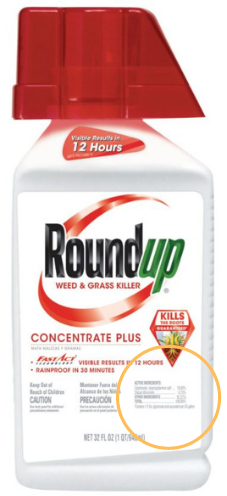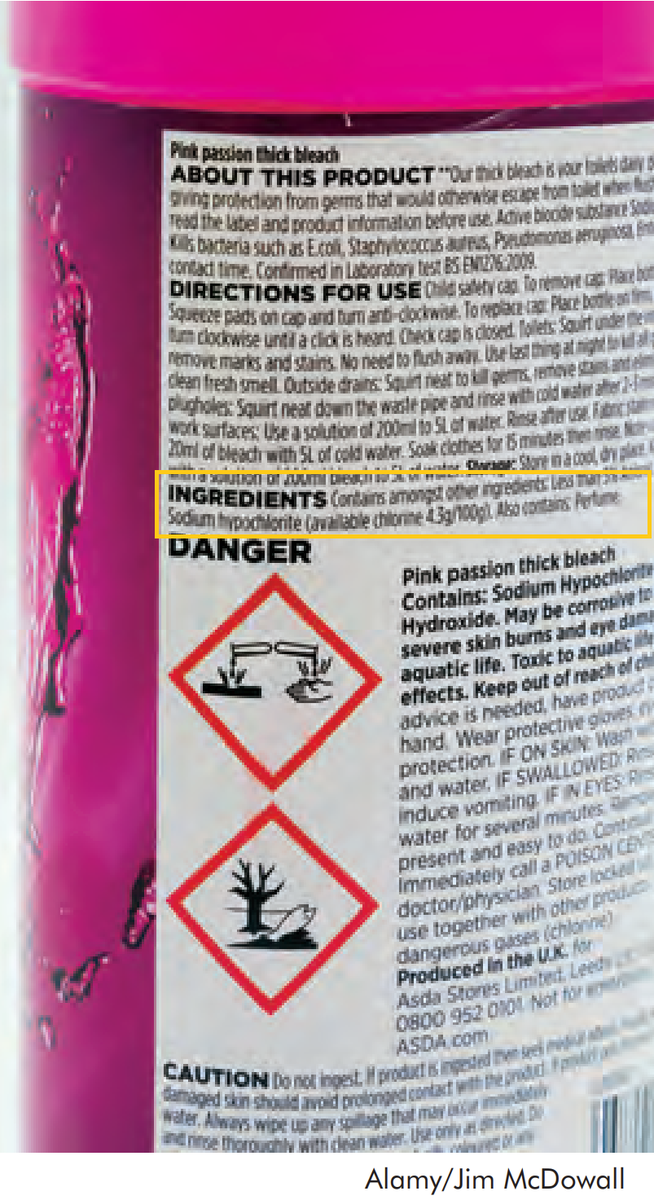Gateway on Pesticide Hazards and Safe Pest Management
How To Find Ingredients in Pesticide Products
Beyond Pesticides offers resources below to evaluate the health and ecological effects of specific chemical exposure from ACTIVE INGREDIENTS in pesticide products, as well as regulatory information and supporting scientific documents. Because various pesticide products can contain more than one active ingredient, it is important to READ the LABEL to determine chemical components.
With 192 different active ingredients and counting, it is essential to establish the connection between the use of these chemicals and their respective hazards.
View the step-by-step guide on how to search for the active ingredient(s) in pesticide products below:
- Go to U.S. EPA's Pesticide Product and Label System and enter the product name. The generic product name may vary.
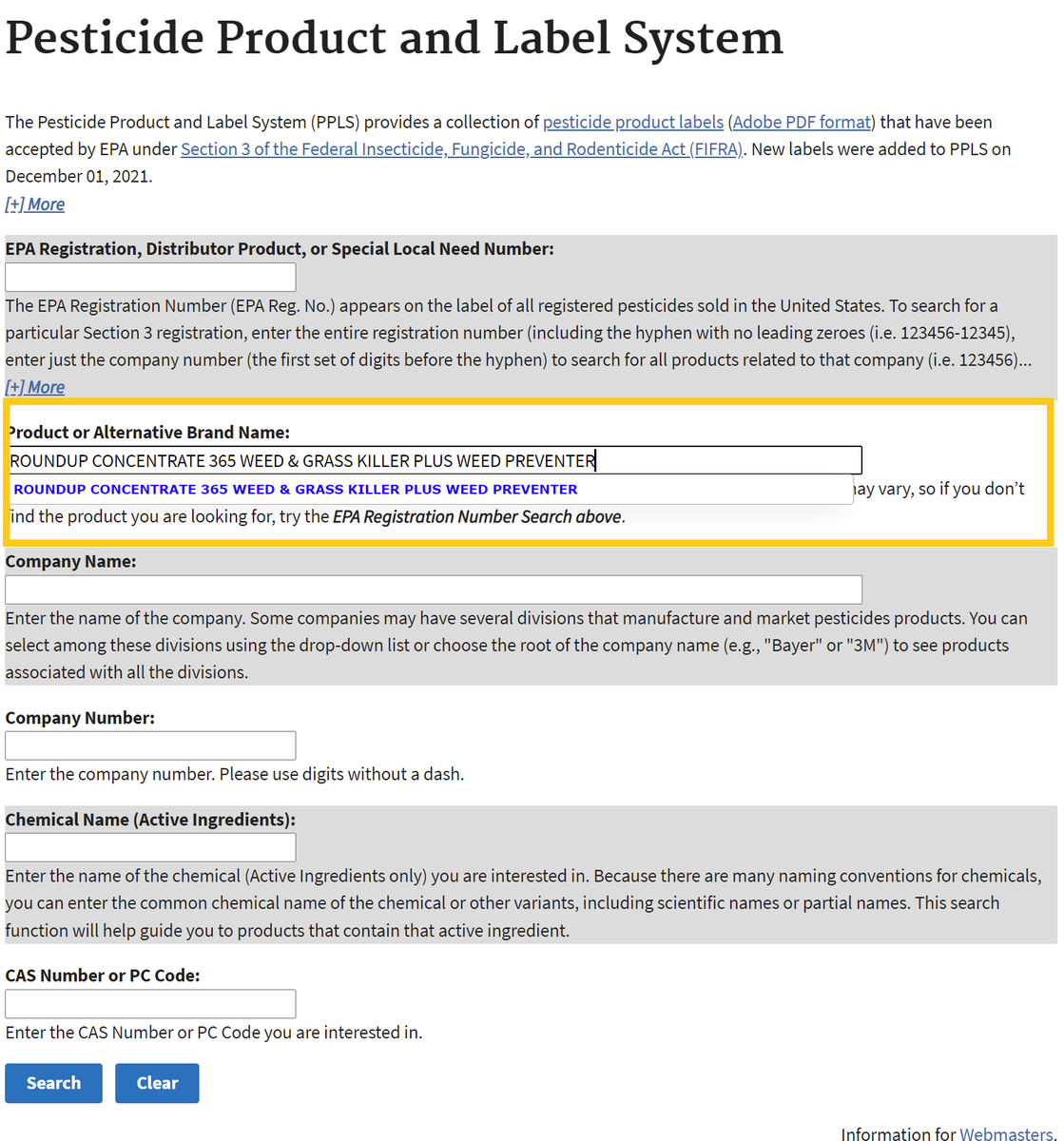
- After searching, click on the chemical ingredients tab or the link for the most recent label to find Active Ingredients.
Chemical List Label List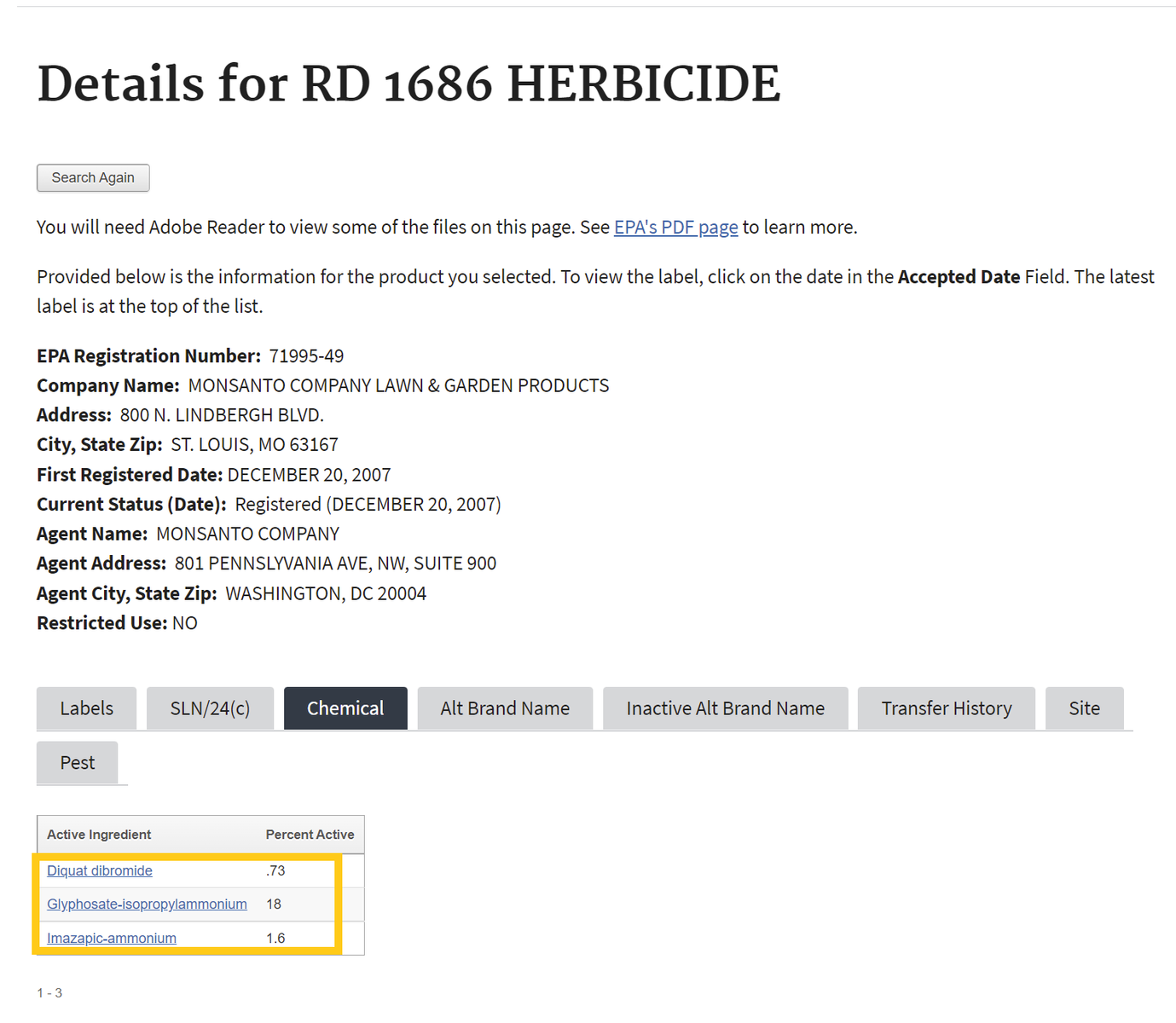
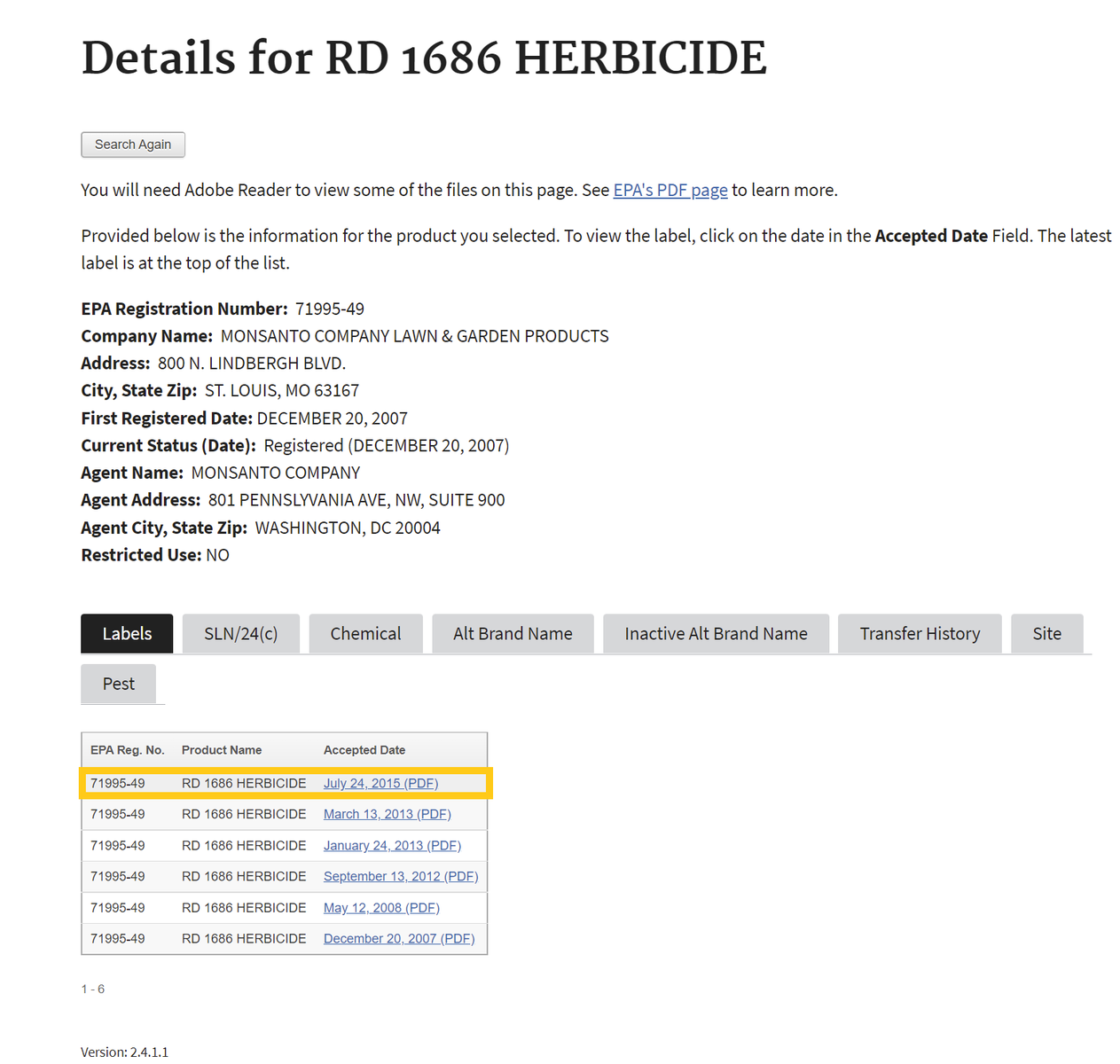
If one selects the chemical ingredients tab, skip to Step 4 . If not, proceed to step number 3 - To find the active ingredient(s) on the label, search for the page in the document containing the date of registration. Usually, the active ingredients section occurs within the first few pages of the label document.
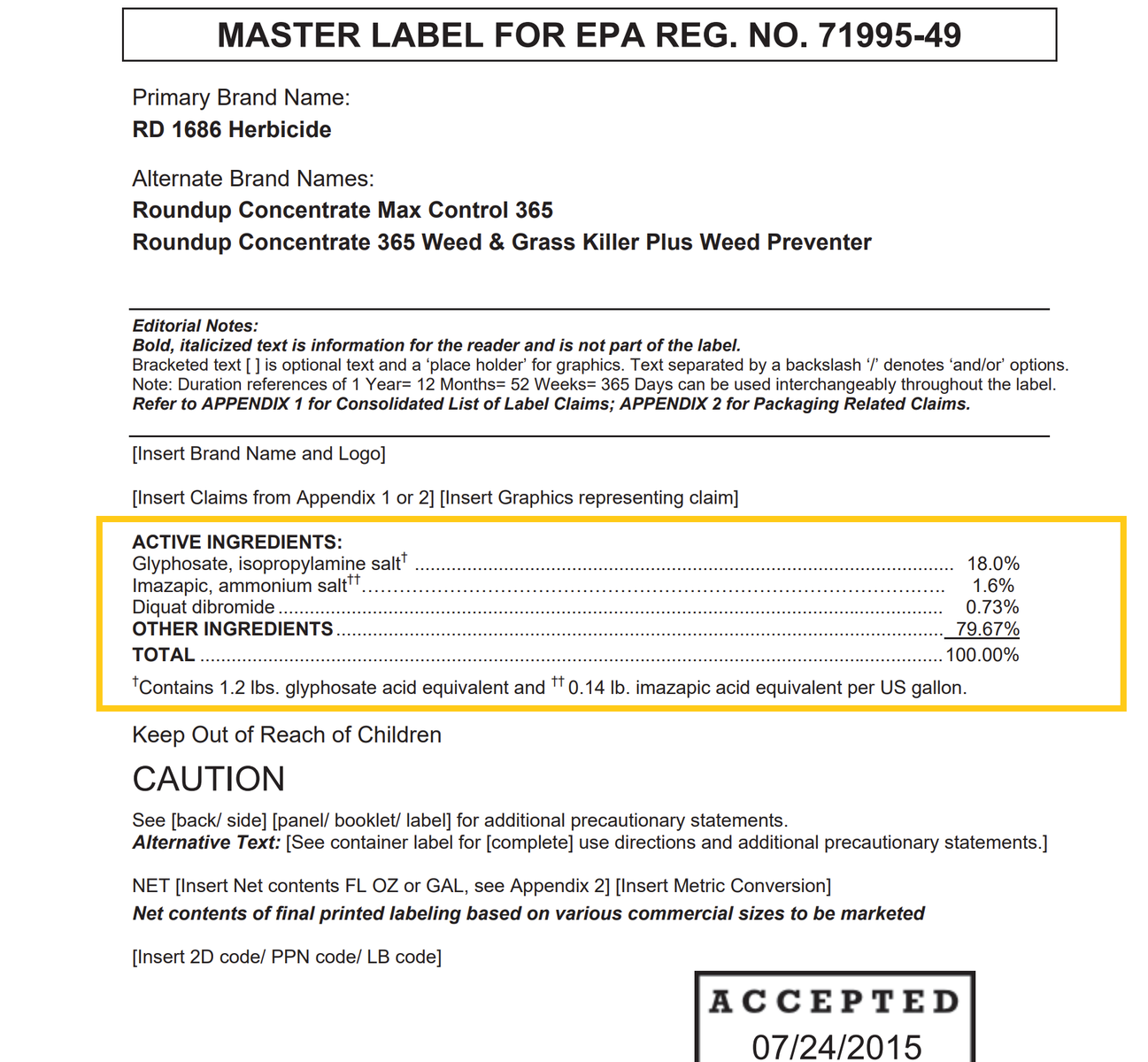
- Return to the Beyond Pesticides Gateway and search for the active ingredient name in the yellow box to the right or from the list below.
Piperonyl butoxide (PBO)
General Information
- Fact Sheet: Piperonyl Butoxide.pdf
- Product Names:
- Chemical Class: Pesticide synergist
- Uses: Preharvest and postharvest uses on crops, direct and indirect treatments of livestock animals and premises, treatments of commercial and industrial facilities and storage areas where raw and processed food/feed commodities are stored or processed, and mosquito abatement areas; targets ants, worms, beetles, mites, flies, gnats, spiders, weevils, caterpillars, grubs, moths, ticks, lice, wasps, aphids, midges, and fish.
- Alternatives: Organic agriculture, Least-toxic mosquito control
- Beyond Pesticides rating: Toxic
Health and Environmental Effects
- Cancer: Possible (8)
- Endocrine Disruption: Yes (36)
- Reproductive Effects: Yes (6)
- Neurotoxicity: Yes (6)
- Kidney/Liver Damage: Yes (7)
- Sensitizer/ Irritant: Yes (7)
- Birth/Developmental: Not documented
- Detected in Groundwater: Not documented
- Potential Leacher: Not documented
- Toxic to Birds: Not documented
- Toxic to Fish/Aquatic Organisms: Yes (7)
- Toxic to Bees: Not documented
Residential Uses as Found in the ManageSafe™ Database
Additional Information
- Regulatory Status:
- EPA Reregistration Eligibility Decision (RED) signed (6/2006)
- Supporting information:
- Asthma, Children and Pesticides (Beyond Pesticides)
- PAN Pesticides Database: PBO (Pesticide Action Network)
- Studies:
- Influence of pyrethroids and piperonyl butoxide on the Ca(2+)-ATPase activity of rat brain synaptosomes and leukocyte membranes. Grosman, N. 2005. Int Immunopharmacol. 5(2):263-70.
- Global DNA methylation screening of liver in piperonyl butoxide-treated mice in a two-stage hepatocarcinogenesis model.. Yafune A, Kawai M, Itahashi M, et al. 2013. Toxicol Lett. 222(3):295-302
- Impact of Prenatal Exposure to Piperonyl Butoxide and Permethrin on 36-Month Neurodevelopment. Horton, et al. 2011. Pediatrics, Online February 7, 2011 (doi:10.1542/peds.2010-0133)
- Occurrence of pesticide residues in indoor dust of farmworker households across Europe and Argentina.. Navarro, I., de la Torre, A., Sanz, P., Baldi, I., Harkes, P., Huerta-Lwanga, E., Nørgaard, T., Glavan, M., Pasković, I., Pasković, M.P. and Abrantes, N., 2023. Science of The Total Environment, p.167797.
- Organic farming reduces pesticide load in a bird of prey. Fuentes, E. et al. (2024) Organic farming reduces pesticide load in a bird of prey, Science of The Total Environment. Available at: https://www.sciencedirect.com/science/article/pii/S0048969724029255.
- Exposure to pesticides, persistent and non − persistent pollutants in French 3.5-year-old children: Findings from comprehensive hair analysis in the ELFE national birth cohort. Macheka, L. et al. (2024) Exposure to pesticides, persistent and non − persistent pollutants in French 3.5-year-old children: Findings from comprehensive hair analysis in the ELFE national birth cohort, Environment International. Available at: https://www.sciencedirect.com/science/article/pii/S0160412024004677.
- Advances and future prospects of pyrethroids: Toxicity and microbial degradation. Singh, S. et al. (2022) Advances and future prospects of pyrethroids: Toxicity and microbial degradation, Science of The Total Environment. Available at: https://www.sciencedirect.com/science/article/abs/pii/S0048969722016540.
- Piperonyl butoxide, a synergist of pesticides can elicit male-mediated reproductive toxicity. Bae, J.W. and Kwon, W.S. (2021) Piperonyl butoxide, a synergist of pesticides can elicit male-mediated reproductive toxicity, Reproductive Toxicology. Available at: https://www.sciencedirect.com/science/article/abs/pii/S0890623821000253.
- A Review on Non-target Toxicity of Deltamethrin and Piperonyl Butoxide: Synergist. Basak, Mrinmoy and Choudhury, Rejwan Ahmed and Goswami, Priyanka and Dey, Biplab Kumar and Laskar, Moksood Ahmed (2021) A Review on Non-target Toxicity of Deltamethrin and Piperonyl Butoxide: Synergist. Journal of Pharmaceutical Research International, http://scholar.researcherseuropeans.com/id/eprint/323/
- Pharmacokinetic analysis of acute and dietary exposure to piperonyl butoxide in the mouse. Jenkins, A. et al. (2023) Pharmacokinetic analysis of acute and dietary exposure to piperonyl butoxide in the mouse, Toxicology Reports. Available at: https://www.sciencedirect.com/science/article/pii/S2214750023001099.
- Subacute oral toxicity of combinations of selected synthetic pyrethroids, piperonyl butoxide, and tetramethrin in rats. Yavuz O, Aksoy A, Das YK, et al. (2013). Subacute oral toxicity of combinations of selected synthetic pyrethroids, piperonyl butoxide, and tetramethrin in rats. Toxicology and Industrial Health. https://journals.sagepub.com/doi/abs/10.1177/0748233712469651
- Monitoring the aquatic toxicity of mosquito vector control spray pesticides to freshwater receiving waters. Phillips, B. M., Anderson, B. S., Voorhees, J. P., Siegler, K., Denton, D., TenBrook, P., Larsen, K., Isorena, P., & Tjeerdema, R. S. (2014). Monitoring the aquatic toxicity of mosquito vector control spray pesticides to freshwater receiving waters. Integrated environmental assessment and management, 10(3), 449–455. https://doi.org/10.1002/ieam.1534
- American Healthy Homes Survey: A National Study of Residential Pesticides Measured from Floor Wipes. Stout, D. M., 2nd, Bradham, K. D., Egeghy, P. P., Jones, P. A., Croghan, C. W., Ashley, P. A., Pinzer, E., Friedman, W., Brinkman, M. C., Nishioka, M. G., & Cox, D. C. (2009). American Healthy Homes Survey: a national study of residential pesticides measured from floor wipes. Environmental science & technology, 43(12), 4294–4300. https://doi.org/10.1021/es8030243
- Pesticide contamination in indoor home dust: A pilot study of non-occupational exposure in Argentina. Aparicio, Virginia & Kaseker, Jessica & Scheepers, Paul & Alaoui, Abdallah & Figueiredo, Daniel & Mol, H. & Silva, Vera & Harkes, Paula & dos Santos, Danilo & Geissen, Violette & Costa, José. (2025). Pesticide Contamination in Indoor Home Dust: A Pilot Study of Non-Occupational Exposure in Argentina. Environmental Pollution. 373. 126208. 10.1016/j.envpol.2025.126208.
- Monitoring of Non-Maximum-Residue-Level Pesticides in Animal Feed: A Study from 2019 to 2023. Giugliano, R., Armenio, V., Savio, V., Vaccaro, E., Ciccotelli, V., & Vivaldi, B. (2024). Monitoring of Non-Maximum-Residue-Level Pesticides in Animal Feed: A Study from 2019 to 2023. Toxics, 12(9), 680. https://doi.org/10.3390/toxics12090680








.png)
